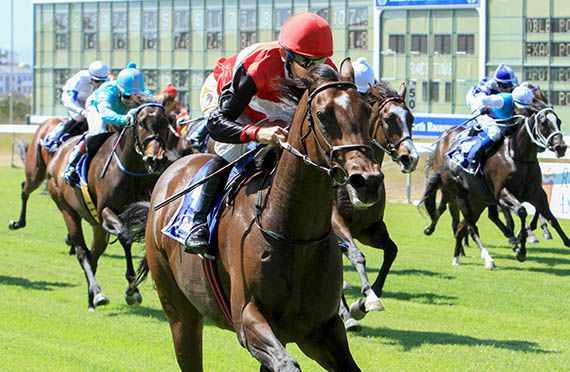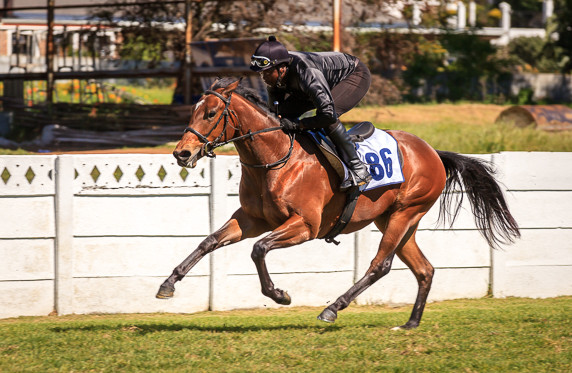“Why are you selling her?”
This is a question I’m expecting some to ask, with us having entered Celigny in next week’s BSA online sale.
Normandy’s Oscar Foulkes writes that given this mare’s pedigree, as well as her produce record, and the fact that she’s in foal, she’s the type of mare that one would usually hold onto for dear life.
In my opinion, she offers a rare opportunity. She is catalogued as lot 11.
She is from a top international Grade I family, with each of her first three dams not just having produced Grade I winners, but also their daughters doing the same.

Chansonette wins the Gr1 Cape Fillies Guineas (Pic – Chase Liebenberg)
Both of Celigny’s daughters with runners have produced stakes-winners, including the Guineas winning Chansonette.
This marks her as a potential foundation mare, especially when one takes into consideration the stallions that her daughters and granddaughters are being covered by.
It’s also worth scratching a little deeper into her produce record. On the surface, her daughter Champery was a Grade II placed two-time winner.

Champery storms home (Pic – Cape Racing)
What doesn’t appear on a catalogue page is that – as a three-year-old – she was beaten less than two lengths in the Cape Flying Championship at just her sixth start.
She contracted travel sickness after this and was never the same again. One can safely say that she didn’t realise all of her potential on the racecourse.
Since we bought her in 2021, Celigny has produced two fillies: an athletic full-sister to Champery, as well as a cracking Legislate, both of which we are retaining. So, our broodmare band will be strengthened by these in years to come.
Celigny’s current two-year-old is a Vercingetorix filly, called Vix Princess. She’s in training with Justin Snaith, and I saw her put up a promising grass gallop last month.
Any one of these three fillies – or whatever she still produces – could add to the considerable black type that’s already on the page.
Of course, broodmares are not just there to produce good racehorses. They also need to generate cash flow.
I’m extremely grateful for the two fillies she’s given us, but these will not generate any cash flow until they go to stud, which is still several years away.
If the foal she’s carrying is also a filly, that could delay even further the possibility of us taking her progeny to the sales.

Champery (Querari-Celigny) at the RTR gallops
So, rather than wait for her to produce a colt that we’d sell as a yearling, we have entered Celigny for the online sale.
From the perspective of her future owner, it will be a good result whether she is carrying a colt or a filly. As a fertile 15-year-old mare, she could produce quite a few more foals.
When we bought her in 2021, she had a due date of mid-November. She got in foal to Legislate on one cover that year and took just one cover to Twice Over last season. She is a straightforward, fertile mare who nurses her foals well.
Why did we send her to Twice Over?
The mating repeats several pedigree patterns found in some of Twice Over’s best horses (and he’s a stallion with an enviable record of producing Grade I winners).
She’s a high-quality mare who throws a lot of speed and we’re hoping that Twice Over will stretch that.









